三丁基(1-丙炔基)锡 ,1-Propynyltri-n-butyltin ,95%
产品编号:SIGMA-499862| CAS NO:64099-82-7| 分子式:C15H30Sn| 分子量:329.1087
本网站销售的所有产品仅用于工业应用或者科学研究等非医疗目的,不可用于人类或动物的临床诊断或者治疗,非药用,非食用,
| 产品名称 | 三丁基(1-丙炔基)锡 |
|---|---|
| 英文名称 | 1-Propynyltri-n-butyltin |
| CAS编号 | 64099-82-7 |
| 产品沸点 | 316.3±25.0 °C at 760 mmHg |
| 产品密度 | 1.082 |
| 产品闪点 | 149.1±10.3 °C |
| 精确质量 | 330.136963 |
| LogP | 9.80 |
| 蒸气压 | 0.0±0.6 mmHg at 25°C |
| 折射率 | n20/D 1.483(lit.) |
| 稳定性 | 远离氧化物。 |
| 储存条件 | 存放在密封容器内,并放在阴凉,干燥处。储存的地方必须上锁,钥匙必须交给技术专家和他们的助手保管。储存的地方必须远离氧化剂,冷藏。 |
相关文档
化学品安全说明书(MSDS)
下载MSDS质检证书(COA)
相关产品
| 符号 |
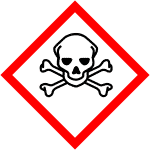
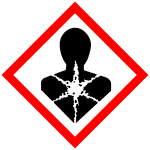
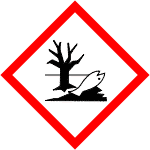
GHS06, GHS08, GHS09 |
|---|---|
| 信号词 | Danger |
| 危害声明 | H301-H312-H315-H319-H372-H410 |
| 警示性声明 | P273-P280-P301 + P310-P305 + P351 + P338-P314-P501 |
| 个人防护装备 | Eyeshields;Faceshields;full-face respirator (US);Gloves;multi-purpose combination respirator cartridge (US);type ABEK (EN14387) respirator filter |
| 危害码 (欧洲) | T: Toxic;N: Dangerous for the environment; |
| 风险声明 (欧洲) | 21-25-36/38-48/23/25-50/53 |
| 安全声明 (欧洲) | 35-36/37/39-45-60-61 |
| 危险品运输编码 | UN 2788 6.1/PG 3 |
| WGK德国 | 3 |
| 包装等级 | II |
| 危险类别 | 6.1 |
| 海关编码 | 2931900090 |
Synonym:Propynyltributylstannane; Propynyltributyltin Section 2 - COMPOSITION, INFORMATION ON INGREDIENTS
Risk Phrases: 21 25 36/38 48/23/25 50/53 Section 3 - HAZARDS IDENTIFICATION EMERGENCY OVERVIEW
Harmful in contact with skin. Toxic if swallowed. Irritating to eyes and skin. Toxic : danger of serious damage to health by prolonged exposure through inhalation and if swallowed. Very toxic to aquatic organisms, may cause long-term adverse effects in the aquatic environment. Potential Health Effects Eye: Causes eye irritation. Skin: Causes skin irritation. Harmful if absorbed through the skin. Ingestion: Harmful if swallowed. May cause irritation of the digestive tract. Inhalation: Harmful if inhaled. Causes respiratory tract irritation. Chronic: The critical effect of tributyltin compounds in rats is on the immune system (ACGIH 7th Edition Documentation of the TLVs). Exposure limits have been recommended for organotin compounds to minimize the potential for adverse effects on immune function and the CNS. Section 4 - FIRST AID MEASURES Eyes: Immediately flush eyes with plenty of water for at least 15 minutes, occasionally lifting the upper and lower eyelids. Get medical aid. Skin: Get medical aid. Immediately flush skin with plenty of water for at least 15 minutes while removing contaminated clothing and shoes. Wash clothing before reuse. Ingestion: Get medical aid. Do NOT induce vomiting. If conscious and alert, rinse mouth and drink 2-4 cupfuls of milk or water. Wash mouth out with water. Inhalation: Remove from exposure and move to fresh air immediately. If not breathing, give artificial respiration. If breathing is difficult, give oxygen. Get medical aid. Do NOT use mouth-to-mouth resuscitation. If breathing has ceased apply artificial respiration using oxygen and a suitable mechanical device such as a bag and a mask. Notes to Physician: Treat symptomatically and supportively. Section 5 - FIRE FIGHTING MEASURES General Information: As in any fire, wear a self-contained breathing apparatus in pressure-demand, MSHA/NIOSH (approved or equivalent), and full protective gear. During a fire, irritating and highly toxic gases may be generated by thermal decomposition or combustion. Use water spray to keep fire-exposed containers cool. Vapors may be heavier than air. They can spread along the ground and collect in low or confined areas. Containers may explode when heated. Extinguishing Media: Use agent most appropriate to extinguish fire. Cool containers with flooding quantities of water until well after fire is out. Use water spray, dry chemical, carbon dioxide, or appropriate foam. Section 6 - ACCIDENTAL RELEASE MEASURES General Information: Use proper personal protective equipment as indicated in Section 8. Spills/Leaks: Absorb spill with inert material (e.g. vermiculite, sand or earth), then place in suitable container. Avoid runoff into storm sewers and ditches which lead to waterways. Clean up spills immediately, observing precautions in the Protective Equipment section. Provide ventilation. Section 7 - HANDLING and STORAGE Handling: Wash thoroughly after handling. Remove contaminated clothing and wash before reuse. Use with adequate ventilation. Avoid contact with eyes, skin, and clothing. Keep container tightly closed. Avoid breathing vapor or mist. Storage: Store in a tightly closed container. Store in a cool, dry, well-ventilated area away from incompatible substances. Section 8 - EXPOSURE CONTROLS, PERSONAL PROTECTION Engineering Controls: Facilities storing or utilizing this material should be equipped with an eyewash facility and a safety shower. Use adequate general or local exhaust ventilation to keep airborne concentrations below the permissible exposure limits. Exposure Limits CAS# 64099-82-7: United Kingdom, WEL - TWA: (listed as tin organic compounds): 0.1 mg/m3 TWA (except cyhexatin, as Sn) United Kingdom, WEL - STEL: (listed as tin organic compounds): 0. mg/m3 STEL (except cyhexatin, as Sn) United States OSHA: 0.1 mg/m3 TWA (as Sn) (listed under Tin orga compounds). Belgium - TWA: (listed as tin organic compounds): 0.1 mg/m3 VLE ( Sn) Belgium - STEL: (listed as tin organic compounds): 0.2 mg/m3 VLE Sn) France - VME: (listed as tin organic compounds): 0.1 mg/m3 VME (a Sn) France - VLE: (listed as tin organic compounds): 0.2 mg/m3 VLE (a Sn) Germany: (listed as tin organic compounds): 0.1 mg/m3 VME (as Sn) Germany: (listed as tin organic compounds): Skin absorber Malaysia: (listed as tin organic compounds): 0.1 mg/m3 TWA (as Sn Netherlands: (listed as tin organic compounds): 0.2 mg/m3 STEL (a Sn) Netherlands: (listed as tin organic compounds): 0.1 mg/m3 MAC (as Spain: (listed as tin organic compounds): 0.1 mg/m3 VLA-ED (as Sn Spain: (listed as tin organic compounds): 0.2 mg/m3 VLA-EC (as Sn Personal Protective Equipment Eyes: Wear chemical splash goggles. Skin: Wear appropriate protective gloves to prevent skin exposure. Clothing: Wear appropriate protective clothing to prevent skin exposure. Respirators: A respiratory protection program that meets OSHA's 29 CFR 1910.134 and ANSI Z88.2 requirements or European Standard EN 149 must be followed whenever workplace conditions warrant respirator use. Section 9 - PHYSICAL AND CHEMICAL PROPERTIES Physical State: Liquid Color: colorless Odor: Not available. pH: Not available. Vapor Pressure: Not available. Viscosity: Not available. Boiling Point: 270 deg C Freezing/Melting Point: Not available. Autoignition Temperature: Not applicable. Flash Point: > 109 deg C (> 228.20 deg F) Explosion Limits, lower: Not available. Explosion Limits, upper: Not available. Decomposition Temperature: Solubility in water: Specific Gravity/Density: 1.082 Molecular Formula: C15H30Sn Molecular Weight: 329.11 Section 10 - STABILITY AND REACTIVITY Chemical Stability: Stable at room temperature in closed containers under normal storage and handling conditions. Conditions to Avoid: Excess heat, confined spaces. Incompatibilities with Other Materials: Strong oxidizing agents. Hazardous Decomposition Products: Carbon monoxide, irritating and toxic fumes and gases, carbon dioxide, tin/tin oxides. Hazardous Polymerization: Has not been reported Section 11 - TOXICOLOGICAL INFORMATION RTECS#: CAS# 64099-82-7 unlisted. LD50/LC50: Not available. Carcinogenicity: Tributylpropynyltin - Not listed by ACGIH, IARC, or NTP. Section 12 - ECOLOGICAL INFORMATION Other No information available. Section 13 - DISPOSAL CONSIDERATIONS Dispose of in a manner consistent with federal, state, and local regulations. Section 14 - TRANSPORT INFORMATION IATA Shipping Name: ORGANOTIN COMPOUND, LIQUID, N.O.S. Hazard Class: 6.1 UN Number: 2788 Packing Group: III IMO Shipping Name: ORGANOTIN COMPOUND, LIQUID, N.O.S. Hazard Class: 6.1 UN Number: 2788 Packing Group: III RID/ADR Shipping Name: ORGANOTIN COMPOUND, LIQUID, N.O.S. Hazard Class: 6.1 UN Number: 2788 Packing group: III Section 15 - REGULATORY INFORMATION European/International Regulations European Labeling in Accordance with EC Directives Hazard Symbols: T N Risk Phrases: R 21 Harmful in contact with skin. R 25 Toxic if swallowed. R 36/38 Irritating to eyes and skin. R 48/23/25 Toxic : danger of serious damage to health by prolonged exposure through inhalation and if swallowed. R 50/53 Very toxic to aquatic organisms, may cause long-term adverse effects in the aquatic environment. Safety Phrases: S 35 This material and its container must be disposed of in a safe way. S 36/37/39 Wear suitable protective clothing, gloves and eye/face protection. S 45 In case of accident or if you feel unwell, seek medical advice immediately (show the label where possible). S 60 This material and its container must be disposed of as hazardous waste. S 61 Avoid release to the environment. Refer to special instructions/safety data sheets. WGK (Water Danger/Protection) CAS# 64099-82-7: No information available. Canada None of the chemicals in this product are listed on the DSL/NDSL list. CAS# 64099-82-7 is not listed on Canada's Ingredient Disclosure List. US FEDERAL TSCA CAS# 64099-82-7 is not listed on the TSCA inventory. It is for research and development use only. SECTION 16 - ADDITIONAL INFORMATION N/A |

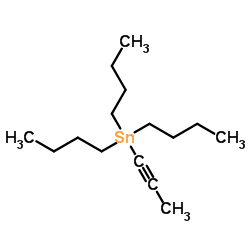
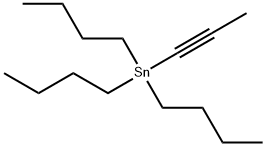
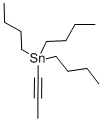
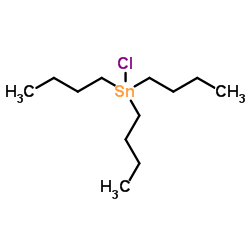






 浙公网安备 33010802013016号
浙公网安备 33010802013016号